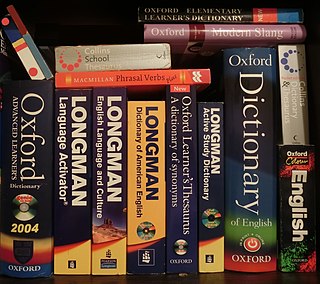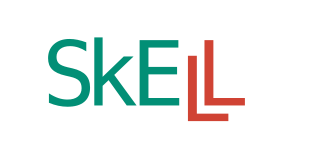Related Research Articles
Computational linguistics is an interdisciplinary field concerned with the statistical or rule-based modeling of natural language from a computational perspective, as well as the study of appropriate computational approaches to linguistic questions.
In linguistics, a corpus or text corpus is a large and structured set of texts. In corpus linguistics, they are used to do statistical analysis and hypothesis testing, checking occurrences or validating linguistic rules within a specific language territory.
Henry Kučera, born Jindřich Kučera, was a Czech-American linguist who pioneered corpus linguistics, linguistic software, was a major contributor to the American Heritage Dictionary, and a pioneer in the development of spell checking computer software.

Eur-Lex is an official website of European Union law and other public documents of the European Union (EU), published in 24 official languages of the EU. The Official Journal (OJ) of the European Union is also published on Eur-Lex. Users can access Eur-Lex free of charge and also register for a free account, which offers extra features.

In corpus linguistics, a collocation is a series of words or terms that co-occur more often than would be expected by chance. In phraseology, collocation is a sub-type of phraseme. An example of a phraseological collocation, as propounded by Michael Halliday, is the expression strong tea. While the same meaning could be conveyed by the roughly equivalent powerful tea, this expression is considered excessive and awkward by English speakers. Conversely, the corresponding expression in technology, powerful computer is preferred over strong computer. Phraseological collocations should not be confused with idioms, where an idiom's meaning is derived from its convention as a stand-in for something else while collocation is a mere popular composition. The ability to use English effectively involves an awareness of a distinctive feature of the language known as collocation. Collocation is that behaviour of the language by which two or more words go together, in speech or writing.
The American National Corpus (ANC) is a text corpus of American English containing 22 million words of written and spoken data produced since 1990. Currently, the ANC includes a range of genres, including emerging genres such as email, tweets, and web data that are not included in earlier corpora such as the British National Corpus. It is annotated for part of speech and lemma, shallow parse, and named entities.
Patrick Hanks is an English lexicographer, corpus linguist, and onomastician. He has edited dictionaries of general language, as well as dictionaries of personal names.
Search engine optimisation indexing collects, parses, and stores data to facilitate fast and accurate information retrieval. Index design incorporates interdisciplinary concepts from linguistics, cognitive psychology, mathematics, informatics, and computer science. An alternate name for the process in the context of search engines designed to find web pages on the Internet is web indexing.
Slovenian National Corpus FidaPLUS is the 621 million words (tokens) corpus of the Slovenian language, gathered from selected texts written in Slovenian of different genres and styles, mainly from books and newspapers.
The Croatian Language Corpus is a corpus of Croatian compiled at the Institute of Croatian Language and Linguistics (IHJJ).
The Europarl Corpus is a corpus that consists of the proceedings of the European Parliament from 1996 to the present. In its first release in 2001, it covered eleven official languages of the European Union. With the political expansion of the EU the official languages of the ten new member states have been added to the corpus data. The latest release (2012) comprised up to 60 million words per language with the newly added languages being slightly underrepresented as data for them is only available from 2007 onwards. This latest version includes 21 European languages: Romanic, Germanic, Slavic, Finno-Ugric, Baltic, and Greek.
The following outline is provided as an overview of and topical guide to natural language processing:

Sketch Engine is a corpus manager and text analysis software developed by Lexical Computing Limited since 2003. Its purpose is to enable people studying language behaviour to search large text collections according to complex and linguistically motivated queries. Sketch Engine gained its name after one of the key features, word sketches: one-page, automatic, corpus-derived summaries of a word's grammatical and collocational behaviour. Currently, it supports and provides corpora in 90+ languages.
A corpus manager is a tool for multilingual corpus analysis, which allows effective searching in corpora.
The Bulgarian National Corpus (BulNC) is a large representative corpus of Bulgarian comprising about 200,000 texts and amounting to over 1 billion words.

A word sketch is a one-page, automatic, corpus-derived summary of a word’s grammatical and collocational behaviour. Word sketches were first introduced by the British corpus linguist Adam Kilgarriff and exploited within the Sketch Engine corpus management system. They are an extension of the general collocation concept used in corpus linguistics in that they group collocations according to particular grammatical relations. The collocation candidates in a word sketch are sorted either by their frequency or using a lexicographic association score like Dice, T-score or MI-score.

SkELL is a free corpus-based web tool that allows language learners and teachers find authentic sentences for specific target word(s). For any word or a phrase, SkELL displays a concordance that lists example sentences drawn from a special text corpus crawled from the World Wide Web, which has been cleaned of spam and includes only high-quality texts covering everyday, standard, formal, and professional language. There are versions of SkELL for English, Russian, German, Italian, Czech and Estonian.
The TenTen Corpus Family (also called TenTen corpora) is a set of comparable web text corpora, i.e. collections of texts that have been crawled from the World Wide Web and processed to match the same standards. These corpora are made available through the Sketch Engine corpus manager. There are TenTen corpora for more than 35 languages. Their target size is 10 billion (1010) words per language, which gave rise to the corpus family's name.
References
- ↑ Institute of Linguistics
- ↑ Tadić 1990, 1996 Archived 2006-02-10 at the Wayback Machine , 1998 Archived 2006-02-10 at the Wayback Machine
- ↑ Bonito
- ↑ Rychlý, Pavel (2007). "Manatee/bonito–a modular corpus manager" (PDF). 1st Workshop on Recent Advances in Slavonic Natural Language Processing. Masaryk University: 65–70.
- ↑ Natural Language Processing Laboratory Archived 2005-10-28 at the Wayback Machine
- ↑ Faculty of Informatics
- ↑ Tadić, Marko (2009). "New version of the Croatian National Corpus". After Half a Century of Slavonic Natural Language Processing. Masaryk University: 199–205.
- ↑ NoSketch Engine
